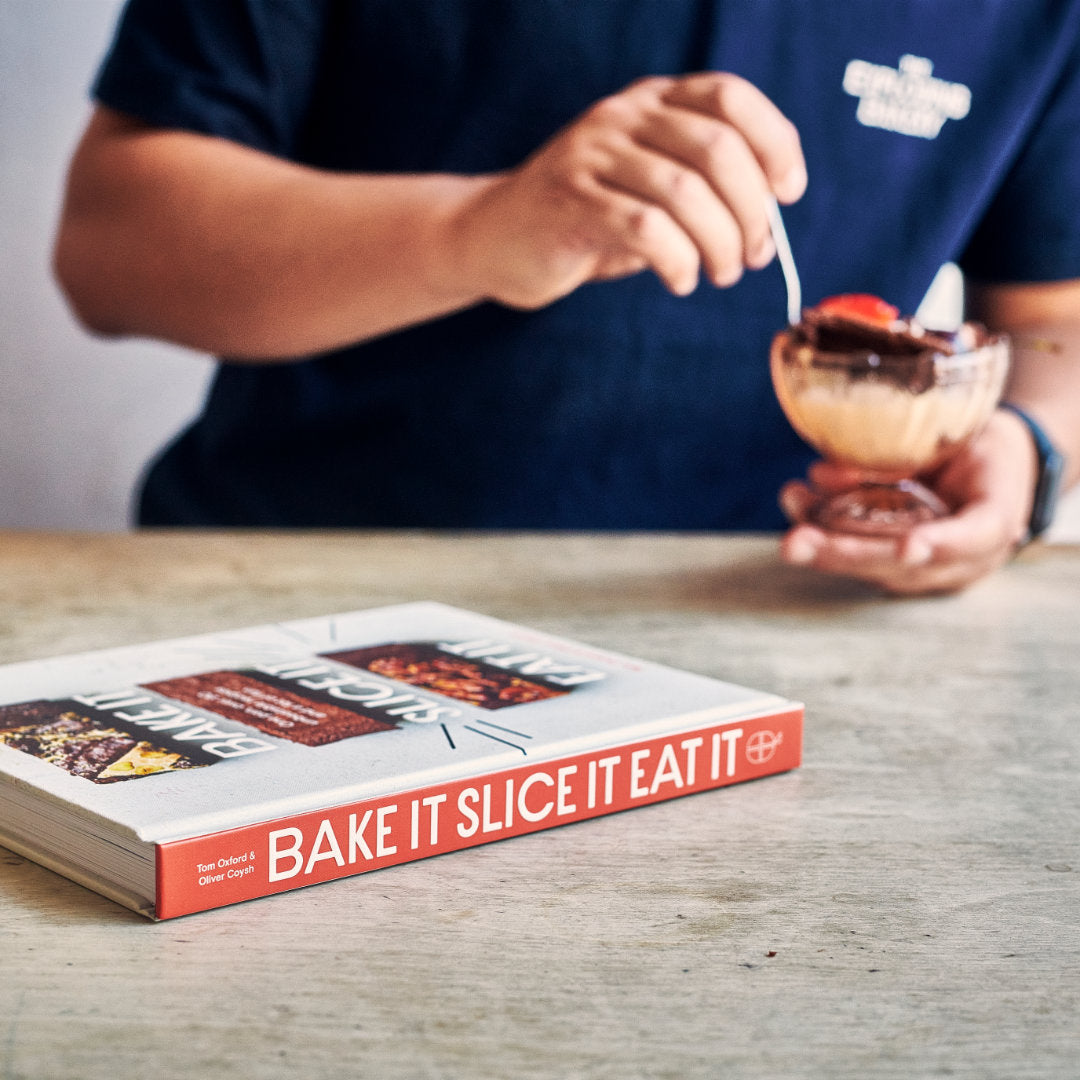BAKE IT, SLICE IT, EAT IT
When we sat down to write Bake it, Slice it, Eat it, my mum's dog-eared collection of cookbooks instantly filled my mind, with memories of my sticky toddler fingers sullying the pages.

They were nothing like the aspirational style so common today. Instead, they were more like short novellas with line drawings of what the finished recipe might look like, or giant tomes with sepia hued pictures of lacquered vegetables. Ones that come to mind are The Neals Yard Wholefood Cookbook, Books for Cooks and Delia Smith's complete cookery course. All of which were stalwarts in my food education and were never left on the shelf too long.
However, the first book I remember really grabbing me by the taste buds and the eyes at the same time, was Breakfast, Lunch, Tea by Rose Cararrini. It combined brilliant design with simple, delicious recipes alongside natural candid photography. And so, 15 years later, when the opportunity to write our very own cookbook was presented to us, we wanted to create something that was full of recipes that were accessible. We also wanted to inject some of the humour and levity with which we run the bakery, whilst giving a nod to the books that we were raised on.
This was all well and good, but the most I’d ever written were some cake descriptions for wholesale price lists,a few long winded text messages and my fairshare of strongly worded emails. This was something very different and it threw up the question, are we bakers or business owners now? More importantly, can we turn our hands to writing a book?

|
The first time I heard the phrase imposter syndrome, I was quick to lazily apply it to myself and every aspect of what I do and have done since starting the company. Be that bookkeeping, sales, hr, marketing, recipe development, web building, staff management, vat returns or trying to understand corporate structures for tax purposes. Plus, a seemingly never ending amount of plumbing.
It would be a stretch to say we had mastered any of these skills, but using imposter syndrome as a crutch was a good way to protect the ego, while ploughing on with running the business. Writing the book was something different though. We’d be putting this book on display in shops in multiple countries. Anyone could amble into a bookshop, pick it up and read the words we wrote. They could even make our recipes at home and then judge them. Most cutting of all though? They could leave an internet review. That was all terrifying and certainly played into a few sleepless nights and a little soul searching. But once we accepted the fact that we’d signed the publishing deal, the only thing left to do was get our heads down and hit the deadlines.
The first task was the recipe development. We were determined to make the vast majority of our recipes using ingredients that you are likely to have either in your cupboard or that are easily available in the local shops. This meant about fifteen trips to the supermarket every day, but it was a good lesson in not over complicating things. The second part was the testing itself. This took so much of the allocated time and was a rollercoaster of emotion. One day you'd be sailing though recipes and getting them right only having to make them three or four times. Other days could be spent perfecting just one recipe over and over again, even having them roll into the next day.
Once we were finally done testing and meticulously recording each minuscule change, we were ready to hit the creative writing hard. At first it was quite an alien feeling, writing about ingredients and techniques you've been using for years. In some ways it felt like we were divulging secrets that we've only ever talked about in the bakery. That said, it was very liberating, the more we wrote the better the rhythm we found. It started to become a joy to find different ways to introduce the same ingredients. It was nostalgic to remember the histories behind some of our classic recipes and put them out there. At low points we'd read our favourite food writers to reignite our love of how language and words can be used to paint “the everyday” into something more poetic or with meaning. Nigel Slater, Fergus Henderson and Diana Henry are a handful of writers who come to mind.
Now, after a very long and slightly nervous wait, we've seen the first copy of the book in the flesh. All the hard work from everyone involved has come together like a very well thought-out recipe. Even if we do say so ourselves. Let’s hope it tastes as good as it looks.

